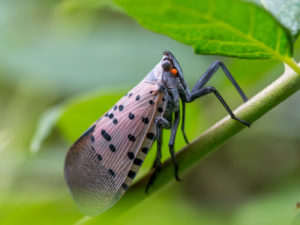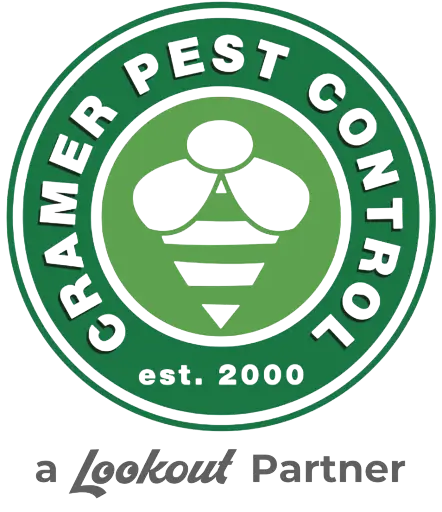North and South Carolina have their share of destructive pests but, one pest, in particular, has been causing trouble in the eastern United States for the last several years. We are talking about the spotted lanternfly. As you prepare your yard for fall you should be on the lookout for this invasive species. While it has not been determined to have landed in the Carolina states just yet, it is only a matter of time. Scientists, professors, and researchers are asking citizens to be on the lookout. The spotted lanternfly was first spotted in Pennsylvania in 2014 and has continued to spread westward. Spotted lanternflies feed on more than 65 plant species and can be highly destructive if not dealt with early.
Lanternfly Damage
The spotted lanternfly causes considerable damage to agricultural fields, fruit trees, and ornamentals. It damages trees by sucking sap from the branches and trunks with their mouthparts. The lanternfly’s feeding is what affects photosynthesis and causes the plant to decline or even die. They also leave behind copious amounts of honeydew, which is a sugary, sweet waste that can attract other insects such as ants and wasps and it can also be a breeding ground for sooty mold. Spotted lanternflies move in large swarms and can cover a tree from top to bottom and cause catastrophic damage to not only trees but over 70 different plants, including oak trees, hops, apples, and peaches.
amounts of honeydew, which is a sugary, sweet waste that can attract other insects such as ants and wasps and it can also be a breeding ground for sooty mold. Spotted lanternflies move in large swarms and can cover a tree from top to bottom and cause catastrophic damage to not only trees but over 70 different plants, including oak trees, hops, apples, and peaches.
How To Identify A Spotted Lanternfly
Despite its name, the spotted lanternfly isn’t a fly or a moth. It’s actually a planthopper that hops from plant to plant. It is approximately one inch long and half an inch wide. Its front wings are identified by black spots while its back wings are black and red. It has a black head and a yellow abdomen with black stripes. Immature insects are black with white spots which change into red and black with white spots later on.
How Does The Spotted Lanternfly Spread?
The spotted lanternfly eggs are laid on the bark of trees and smooth, man-made objects. The insect moves over long distances when trees containing eggs are cut and transported. Always check your firewood for any stages of this insect and be cautious about moving plant material in general.
How To Control The Spotted Lanternfly?
Adult lanternflies lay anywhere from 30-50 eggs in the fall in mud casings. The eggs are laid on surfaces such as rocks, trees, sides of houses, and decks. Eggs can be scraped off with a knife and placed in alcohol to eliminate them.
- Sticky Bands: During the spring when nymphs have hatched and are on the move, you can use a sticky band around the tree to trap them as they climb up. Replace the traps every one to two weeks.
- Pesticides: Since the spotted lanternfly is a new species not much is known about what can eradicate it. Research is currently underway to identify which pesticides are effective in controlling this pest. Preliminary results suggest that bifenthrin, pyrethrin, carbaryl, and dinotefuran are the most effective in managing spotted lanternfly infestations. Pesticides have been effective against the nymph and adult stages from late spring through late fall. Scientists and officials are still working to figure out what the best products are for eliminating this destructive pest.
- Reduce The Host: It is highly suspected that the spotted lanternfly is attracted to the tree of heaven, a Chinese species that they must feed on in order to lay their eggs. These trees should be removed or thinned out to protect other trees and plants in the area. On the other hand, a tree of heaven could be a good place to monitor, trap, and eliminate these pests.
Reporting A Spotted Lanternfly
If you spot or identify a spotted lanternfly in your area you can contact either the N.C. Department of Agriculture or the S.C. Department of Agriculture. Both strongly encourage you to report any sightings. They will respond immediately to manage or eradicate the population if possible.
Call The Pest Control Experts at Cramer
If fall pests are driving you up the wall, call the professionals at Cramer Pest Control. We have years of experience dealing with pests of all shapes and sizes. If you want to protect your home from fall pests this year, then ask about our residential pest control program.
Own a business? With our Commercial Pest Control program, we can save your small business from being overrun with pests.’
Don’t wait for the problem to get out of control, call us now. If you are in North Carolina, you can reach us at 704-763-0204. Home or business in South Carolina? Call us at 803-802-7540. You can also contact us here for more information. Don’t forget to check out our blog for monthly pest control tips and tricks.
Protect Your Trees From The Spotted Lanternfly in North Carolina and South Carolina
Protecting North Carolina and South Carolina
